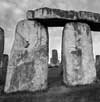
In medicine, we have many mysteries, and in September, 2008 the New England Journal of Medicine delivered another. In the largest and best study of its kind, investigators found that subjects with knee pain and those without knee pain had nearly the same prevalence of meniscal tears on magnetic resonance imaging (MRI).
For some, the findings may strike a familiar chord. Multiple spinal MRI studies have reported a similar phenomenon, in which herniated discs are found as commonly on the MRI’s of healthy individuals without back pain as on the MRI’s of back pain sufferers. Contrary to standard medical teaching for decades, this means that for the great majority of patients, both herniated discs and meniscal tears are probably asymptomatic, or even normal. What, then, causes back and knee pain? We don’t know.
For physicians, this is nothing new. Despite tremendous strides in knowledge, we deal with mystery every day. From complex conditions like multiple sclerosis and auto-immune disease to simple phenomena like yawning and knuckle-cracking, modern medicine remains baffled and unknowing. In a sense, the existence of these mysteries is unremarkable. Medical science is, after all, in its nascent stages. Oceans of knowledge lie ahead, and the everyday practice of medicine remains more uncertain than certain. In his most recent book, The Uncertain Art: Thoughts on a Life in Medicine, Sherwin Nuland, one of medicine’s great modern writers, ruminates beautifully on medicine’s inevitable and profound uncertainty.
But there is a disconnect: In medical school we were told in no uncertain terms that herniated discs, ‘sciatica’, muscular derangement, and nerve entrapment are all common and proven etiologies for back pain. This was not true. We were also taught that meniscal tears are a consistent and proven cause of knee pain. This too was incorrect. On the force of these authoritative teachings, however, physicians have confidently pronounced diagnoses, performed tests, and tailored treatments—despite the evidence.
Published alongside the MRI study in the September issue of the NEJM is a second, equally provocative study. In a randomized controlled trial comparing arthroscopic knee surgery to standard therapies for osteoarthritic knee pain, surgery was found to be no better. These findings mirror the findings of most research done on disc surgery for back pain, and given the results of the MRI studies, the results come as little surprise.
When physicians speculate, or claim to know the cause of back and knee pain, and when they devise and undertake treatments to address these presumed causes, there is rarely any intention to deceive or mislead. These are signs of deference to the conventional norms of medical knowledge and behavior. But consider the impact: back pain is now the single most common ailment for which patients seek alternative therapies, and the ranks are growing. Joint pain is the fourth most common. Where alternative medical therapies thrive, it is a sign that conventional allopathic medicine has failed. Acupuncture, chiropractic, aromatherapy, and other fields have become common refuges for back and knee pain sufferers. Research suggests, however, that these alternative methods are often no more effective than conventional treatments. This leads to an uncomfortable, but inevitable, question: If alternative treatments don’t work better—if they’re not more effective—then what exactly is driving our patients away?
Perhaps there is a lesson in a more classic mystery. The placement of the massive stones and their curious arrangement at Stonehenge both defy plausible limits of ancient engineering. In addition, the site’s purpose and meaning are a source of ongoing and often heated debate. Despite considerable efforts anthropologists and historians have yet to unlock the mysteries of Stonehenge. There is, however, no disdain for the limits of modern anthropology and no contempt for anthropologists who concede these limits. But imagine an anthropologist who professed, with arrogant certitude, to know the origin, meaning, and history of Stonehenge. While we might at first be intrigued, we would undoubtedly test the anthropologist’s theories. And if we found them to be plainly contradicted by the facts, we would quickly lose our trust in this individual. For patients with back and knee pain the issues are similar, though the stakes are much more personal. When MRI studies show our theories to be wrong, and when therapies such as back and knee surgeries simply don’t help, our credibility is destroyed.
Perhaps it is time for us to take a new approach. It may be flattering to have patients believe that physicians and medical science are all-knowing, but it has been quietly corrosive. When patients and doctors recognize the limitations of science patients can reclaim control over their illness, their wellness, and their bodies, while doctors can focus their efforts on aspects of illness for which science has an established and proven role. The search for truth about knee and back pain and the search for the origin of Stonehenge will all continue. In the meantime, let uncertainty reign. And let your patients know: we don’t know.
David H. Newman is the author of Hippocrates’ Shadow (Scribner $26)
References:
- Alexandra Kirkley, M.D., Trevor B. Birmingham, Ph.D., Robert B. Litchfield, M.D., et al. A Randomized Trial of Arthroscopic Surgery for Osteoarthritis of the Knee. NEJM. 2008. 359(11): 1097-1107
- Englund, M.D., Ph.D., Ali Guermazi, M.D., Daniel Gale, M.D., et al. Incidental Meniscal Findings on Knee MRI in Middle-Aged and Elderly Persons. NEJM. 2008. 359(11): 1108-1115
- Patricia M. Barnes, Eve Powell-Griner, Kim McFann and Richard L. Nahin Complementary and alternative medicine use among adults: United States, 2002 Seminars in Integrative Medicine, Volume 2, Issue 2, June 2004, Pages 54-71



